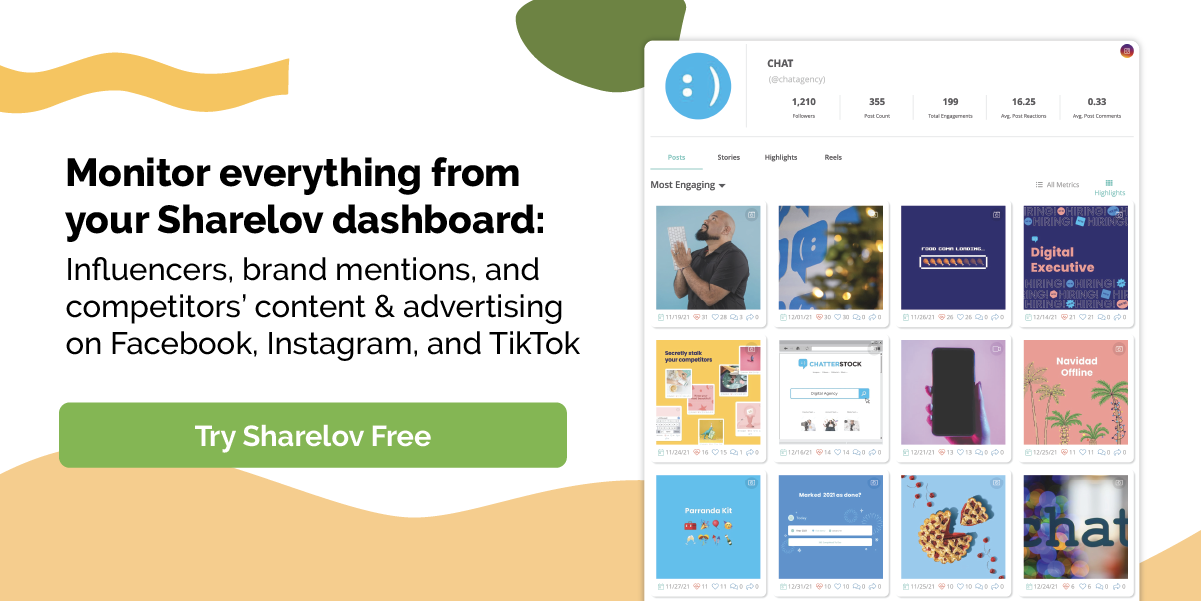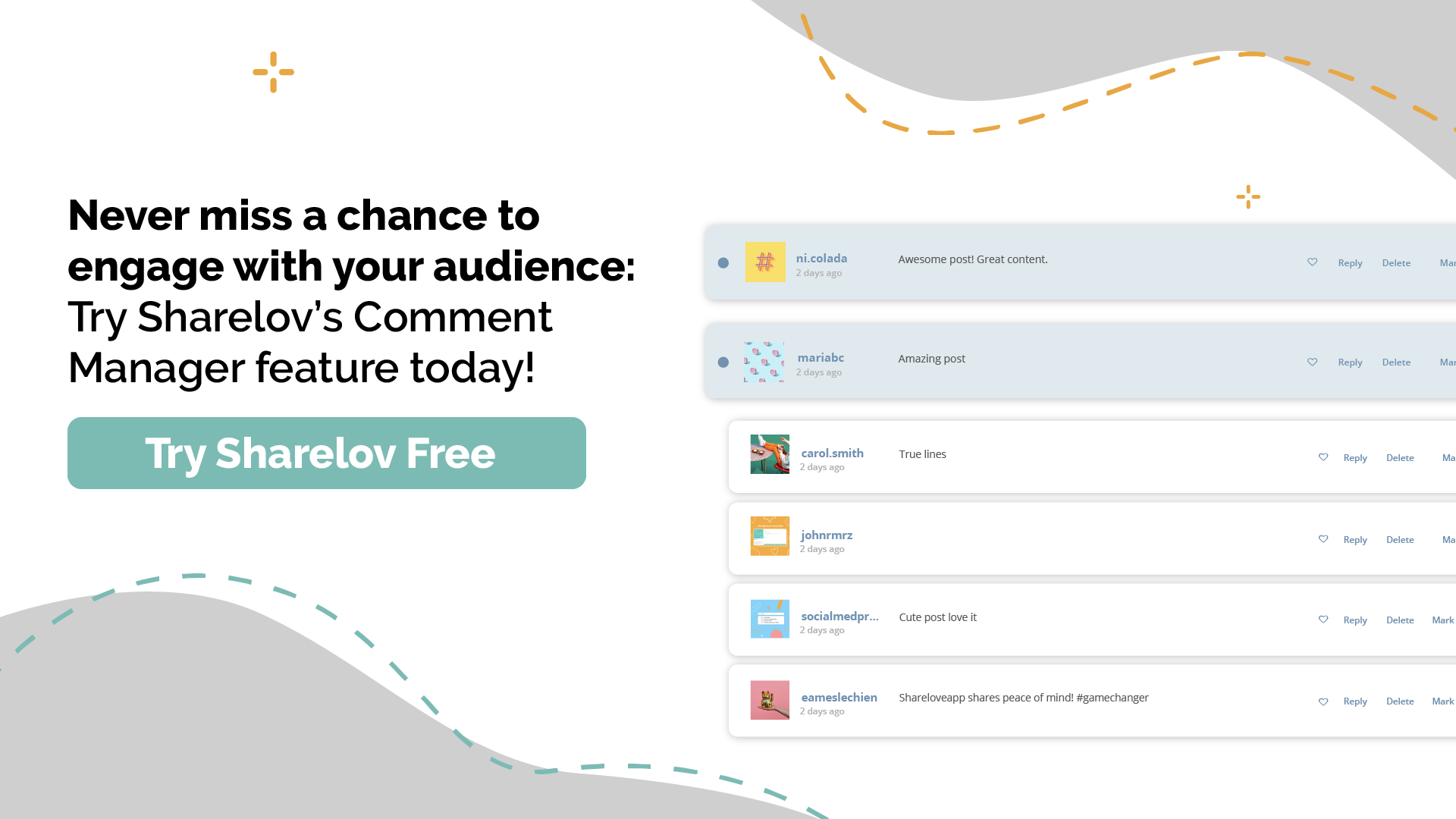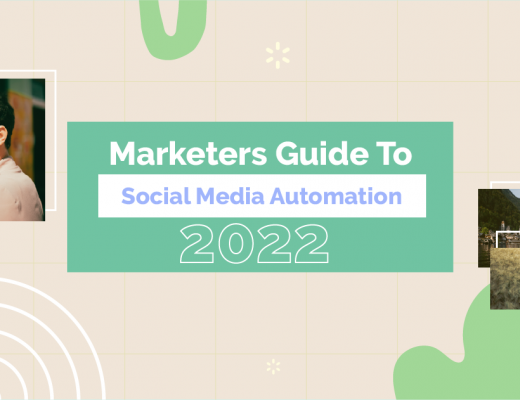Unlocking the Mysteries of Social Media Management
We’ve all been there, haven’t we? Juggling multiple social media accounts like a circus performer, feeling like we’re one dropped ball away from a complete disaster. Fear not, dear reader, for in this digital age, there’s a method to the madness! And guess what? We’re going to spill the beans on how to manage multiple social media accounts productively.
So sit back, relax, and get ready for a crash course in social media productivity that’ll leave you wondering how you ever survived without it. We’ll cover everything from setting up a solid foundation to employing nifty tools like Sharelov that’ll have you zipping through your accounts like a pro.
The Foundation: Building a Solid Social Media Plan
1. Identifying Your Goals and Objectives
First things first, let’s lay the groundwork with Sharelov’s social media tools. To manage your social media accounts productively, you need to have a clear idea of what you’re aiming for. Here are some common goals and objectives to consider:
Increase Brand Awareness
One of the primary objectives of social media marketing is to make your brand more visible and recognizable. By sharing engaging content, collaborating with influencers, and interacting with your audience, you can boost your brand’s presence across different platforms.
For example, you could start a hashtag campaign on Instagram to encourage user-generated content or collaborate with a popular influencer in your industry to reach a broader audience.
You can also check out our How To Build Brand Awareness On Social Media article, where we show you how to build brand awareness that allows you to develop the active, engaged social media audience of your dreams.
Generate Leads and Sales
Social media is a powerful tool for driving potential customers to your website or online store. You can use targeted ads, promotional offers, and engaging content to capture leads and drive sales.
For instance, you could run a Facebook ad campaign targeting users interested in your niche, or offer exclusive discounts to your Twitter followers to incentivize purchases.
Provide Customer Support
Social media platforms can serve as an excellent channel for customer support, helping you address issues and answer questions quickly and efficiently. By being responsive and proactive on social media, you can foster trust and loyalty among your customers.
For example, you could set up a dedicated support account on Twitter where customers can send in their queries or use Facebook Messenger to offer live chat support.
Engage Your Community
Another essential goal of social media marketing is to build a community around your brand. By encouraging conversations, sharing user-generated content, and hosting events or giveaways with Sharelov, you can create a loyal following that’s genuinely invested in your brand’s success.
For example, you could host a weekly Twitter chat or Q&A session to engage your followers or run a photo contest on Instagram, encouraging participants to use your branded hashtag.
Establish Thought Leadership
Positioning yourself or your brand as an expert in your industry can help you build credibility and trust with your audience. By sharing valuable insights, industry news, and thought-provoking content, you can establish yourself as a go-to source of information in your niche.
For example, you could publish LinkedIn articles on industry trends or create YouTube videos offering tips and tricks related to your field.
By identifying your specific goals and objectives, you’ll be better equipped to create a targeted social media strategy that drives results and helps you manage your accounts productively.
2. Know Your Audience
Now that you’ve got your goals locked in, it’s time to figure out who you’re speaking to. Knowing your target audience is crucial to crafting engaging content that resonates with them. Here are some factors to consider when defining your audience:
Age
Different age groups have distinct preferences, habits, and expectations when it comes to social media. According to a Pew Research Center study, as of 2021, 71% of 18-29-year-olds in the U.S. use Instagram, while 48% of the same age group use Facebook.
On the other hand, Facebook remains popular among older age groups, with 79% of 30-49-year-olds and 73% of 50-64-year-olds using the platform. Understanding the age demographics of your audience will help you create content that appeals to their interests and needs.
TikTok, for example, is particularly popular among younger users, with 60% of its U.S. users being between 16-24 years old. In contrast, LinkedIn appeals more to professionals and older demographics.
Location
Knowing where your audience is located can help you tailor your content and messaging to resonate with users from specific geographic areas. This can be especially helpful when promoting local events, targeting regional markets, or addressing cultural differences. Sharelov’s data indicates that different countries favor specific platforms: Instagram is the top choice in countries like the United States and Brazil, while Facebook dominates in countries like India and Indonesia.
Suppose you’re a U.S.-based brand looking to expand into the European market. In that case, you might create separate social media accounts or use geotargeting to share content that’s relevant to your new audience.
Interests
Identifying your audience’s interests is essential to creating content that captures their attention and keeps them engaged. By understanding what your audience is passionate about, you can develop content that aligns with their interests and preferences. For example, TikTok is famous for its short, entertaining videos, while Instagram users tend to gravitate towards visually appealing images and stories.
Let’s say you’re a fitness brand targeting health-conscious consumers. You could share workout tips, healthy recipes, and motivational quotes that resonate with your audience.
Online Habits
Understanding how your audience behaves online can help you optimize your social media strategy to better reach and engage them. According to Sprout Social’s data, the best times to post on social media platforms vary. For instance, the best time to post on Instagram is between 2 PM and 3 PM, while the most engagement on Facebook occurs between 11 AM and 2 PM. Consider factors like:
- Which platforms they’re most active on
- When they’re most likely to be online
- How they prefer to consume content (e.g., videos, articles, images)
For instance, if your target audience is predominantly active on Instagram and prefers visual content, you might prioritize creating eye-catching graphics and short videos to share on that platform.
Pain Points and Challenges
Identifying the problems and challenges your audience faces can help you create content that addresses their needs and positions your brand as a solution. By demonstrating empathy and understanding, you can foster trust and loyalty among your followers. For example, LinkedIn users often seek professional advice and industry insights, while Facebook users may appreciate content that addresses their personal interests and daily challenges.
Consider a target audience consisting of busy working professionals; you could share productivity tips, time management hacks, and stress-relief techniques to help them better manage their work-life balance.
By taking the time to understand and define your audience, you’ll be better equipped to create content that resonates with them, ultimately helping you manage your social media accounts more productively.
3. Develop Your Content Strategy
Once you’ve got a handle on your audience, it’s time to create a content strategy that’ll keep them coming back for more. A well-rounded content strategy can help you stay consistent and engaging, ensuring that your social media accounts remain productive. Here’s what you should consider:
Planning Your Content Mix
A successful content strategy involves a mix of content types that cater to your audience’s preferences and align with your objectives. These can include educational, promotional, engaging, and user-generated content.
According to the 80/20 rule, 80% of your content should be informative, entertaining, or engaging, while only 20% should be promotional. This balance helps maintain your audience’s interest without overwhelming them with sales pitches.
For instance, a popular brand like Coca-Cola shares a mix of entertaining videos, user-generated content featuring their products, and promotional posts about their campaigns to maintain a diverse and engaging content mix.
Creating a Content Calendar
A content calendar helps you plan, organize, and schedule your social media posts in advance, ensuring that you maintain consistency and avoid last-minute scrambling for content ideas.
According to a study by CoSchedule, marketers who use a content calendar are 397% more likely to report success in their content marketing efforts.
For example, a small business owner might create a monthly content calendar outlining their planned posts, including weekly blog post shares, daily tips or quotes, and biweekly promotional offers.
Sharelov’s Calendar tool makes it easy for team members to view and filter upcoming social media posts. From the calendar, team members can also access a post’s collaboration page with just one click.
Defining Your Brand Voice and Tone
Your brand voice and tone play a critical role in how your audience perceives your brand and connects with your content. It’s essential to establish a consistent voice and tone that reflects your brand’s personality and values.
A study by Sprout Social found that 64% of consumers want brands to connect with them, with 40% citing memorable content as the most critical factor.
Consider the brand Wendy’s, known for its witty and humorous tone on social media. Their unique voice has helped them create a strong online presence and engage with their audience in a way that sets them apart from competitors.
Analyzing and Adjusting Your Strategy
A successful content strategy requires ongoing analysis and adjustments based on your performance and audience feedback. Regularly review your social media analytics to identify trends, top-performing content, and areas for improvement.
For example, if you notice that your video posts receive significantly higher engagement than your image posts, you might adjust your strategy to include more video content moving forward.
By developing a well-rounded content strategy that considers your audience’s preferences, your brand’s voice, and data-driven insights, you’ll be better equipped to manage your social media accounts productively and effectively.
The Toolbox: Utilizing Time-Saving Tools and Techniques
Now that we’ve got the foundation set, let’s dive into the toolbox and explore some nifty gadgets to help you manage multiple social media accounts productively.
1. Social Media Management Platforms
These handy-dandy tools are a godsend for busy social media managers. Platforms like Sharelov allow you to manage all your accounts from one dashboard, schedule posts, and monitor analytics. Talk about a time-saver! Sharelov also offers features like a drag-and-drop content calendar, task tracking, and a hashtag suggestion tool to keep you organized and efficient.
2. Automation Tools
Who doesn’t love a little automation magic? Tools like IFTTT and Zapier can help you streamline your social media tasks by automating repetitive actions. For example, you can set up a “zap” to automatically share your blog posts to your social media accounts. Neat, huh?
For marketers, the best social media automation tools are usually found in marketing collaboration software, such as Sharelov, so everything you use works together seamlessly from one main dashboard.
To get started using social media automation, you can look for individual tools to perform each task or subscribe to a software service that provides a full suite of tools.
In most cases, it’s easier and more cost-effective to sign up for one service that provides you with a full suite of tools.
Many software automation companies also provide your team with additional collaboration tools that allow you to:
- Visualize posts before hitting “publish.”
- View all your upcoming posts on a social media calendar.
- Publish all your social media posts from one dashboard instead of logging into several different platforms each day.
- Bulk upload media (photos, videos, etc.) to use in campaigns.
- Share rough drafts, ideas, and feedback with team members as posts are being developed.
- Request and secure approvals from management or clients before hitting “publish.”
- Easily copy, adjust, and cross-post content to different social media platforms.
- Chat with team members in real-time or leave messages.
- Develop social media ad campaigns.
- Create campaign briefs and campaign pages that organize your content and communications. View it all by recency or filter by social media platform.
3. Content Curation Tools
Stuck for content ideas? No sweat! Content curation tools like Feedly and Pocket can help you discover and organize relevant content to share with your audience, keeping your accounts fresh and engaging.
The Strategy: Staying Productive in the Social Media Jungle
With our foundation and toolbox in place, let’s talk about how to manage multiple social media accounts productively on a day-to-day basis using Sharelov.
1. Establish a Routine
Consistency is key when it comes to social media management. Establish a daily routine that includes:
Checking notifications and messages
One of the most important things you can do to stay productive is set a schedule for checking your social media accounts—and stick to it! This will allow you to post relevant content on all of your accounts at the same time, making sure that each one has fresh content when users check in.
Reviewing and engaging with comments
Another important task that can help you stay on top of your accounts. You should also schedule time to respond to messages and comments, as well as engage with other users in your industry.
Posting and scheduling content
You should also set aside some time to create new content or schedule posts for later. This can be done either on a desktop computer or with a mobile app. If you have access to both, it’s best to use the platform that allows you the most freedom in terms of creating and editing your posts.
Monitoring analytics and adjusting your strategy as needed
Finally, it’s useful to schedule some time to monitor your analytics and adjust your strategy as needed. You should look at the performance of each post, including how many views and interactions it received, as well as the amount of engagement with others on that platform. This information can help you determine which types of posts are most successful and how often you should post them.
2. Batch Your Tasks
Let’s face it, managing social media accounts can be a whirlwind of activity, but it doesn’t have to be a chaotic mess. Batching your tasks is the key to unlocking greater efficiency and kicking distractions to the curb. By grouping similar tasks together and allocating specific time blocks for each, you’ll be well on your way to mastering your social media game. Here’s a breakdown of how to get the ball rolling:
Content creation
Time to unleash your inner artist! Dedicate a chunk of your day to brainstorming, designing, and crafting captivating content that’ll leave your followers wanting more. Instead of posting the same type of content again and again, mix it up by balancing the different formats that social media platforms provide.
According to Sharelov, user-generated content has a 4.5% higher conversion rate, so don’t hesitate to tap into your audience’s creativity by encouraging them to share their own posts and experiences related to your brand.
Scheduling posts
Timing is everything. Sharelov’s data reveals that the best time to post on Instagram, for instance, is between 9 AM and 11 AM, while Facebook’s sweet spot is around 1 PM to 3 PM. Set aside a block of time to schedule your posts using tools like Buffer or Hootsuite, making sure they’ll hit your audience when they’re most likely to engage.
Auto-publishing tools work great for scheduling! These allow you to set your posts to automatically publish at specific times in any time zone. This means that if the best time for your brand to post on Instagram is 3 in the morning, you can schedule a post to go live at 3 am (while you’re sleeping!).
Auto-publish also allows your team to schedule all your posts in advance and avoid having to log on to different social media platforms to post content. Instead, you can set it, forget it, and move on to more productive activities.
Responding to comments and messages
Don’t leave your followers hanging! Carve out some time each day to nurture your online community by answering their questions, addressing their concerns, and showing your appreciation for their support. Sharelov emphasizes the importance of prompt responses, as 89% of consumers will switch to a competitor after a poor customer service experience.
According to a 2019 study:
Consumers spend up to 75% more with brands they follow on social media.
If you don’t interact with commenters, though, chances are they’ll skip over your posts and forget about your brand altogether.
Responding to comments is a critical step toward continued engagement and customer loyalty!
With social media software like Sharelov, you can quickly organize follower comments with tags, then share them with your teammates. Plus, Sharelov lets you view and manage comments from your desktop for easier access.
Analyzing and adjusting your strategy
You know what they say: “You can’t manage what you don’t measure.” Regularly setting aside time to review your social media performance is crucial for staying ahead of the curve. Dive into the nitty-gritty of your analytics using Sharelov’s platform, and identify what’s working, what’s not, and where improvements can be made.
For example, Sharelov found that tweets with images receive 18% more clicks, so you might want to up your visual game on Twitter.
By batching your tasks and sprinkling in some Sharelov insights, you’ll find yourself breezing through your social media to-do list like a pro, and with time to spare!
Find out how to create a social media strategy that boosts your ROI in this step-by-step guide to creating a thorough social media strategy for your brand:
3. Set Boundaries and Avoid Distractions
Managing multiple social media accounts can be overwhelming, especially when distractions are lurking around every corner. To stay productive and maintain a healthy work-life balance, it’s crucial to set boundaries and avoid distractions:
- Turn off non-essential notifications: Constant notifications can disrupt your focus and hinder productivity. According to a study conducted by the University of California, Irvine, it takes an average of 23 minutes to refocus after an interruption (Source: UC Irvine). To avoid this, turn off any non-essential notifications on your devices during work hours, allowing you to concentrate on the task at hand.
- Use website blockers to eliminate distractions: Various website blockers, such as Freedom or Cold Turkey, can help you stay focused by restricting access to distracting websites during work hours. According to a study published in the Journal of Applied Psychology, people who use website blockers report higher productivity levels (Source: Journal of Applied Psychology).
- Set time limits for social media activities: Allocating specific time slots for social media tasks can help prevent you from getting lost in endless scrolling. The Pomodoro Technique, for example, suggests working in 25-minute intervals with short breaks in between (Source: The Pomodoro Technique). By setting time limits and adhering to them, you can maintain productivity while still staying active on social media platforms.
By implementing these strategies, you can create a more focused and efficient work environment, leading to better management of multiple social media accounts.
Mastering the Art of Productive Social Media Management
And there you have it – a comprehensive guide on how to manage multiple social media accounts productively. By building a solid foundation, using time-saving tools, and implementing effective strategies, you’ll become a social media maestro in no time.
So what are you waiting for? It’s time to put these tips into action and start juggling your social media accounts like a pro. Remember, practice makes perfect, and with the right approach and the help of Sharelov, you’ll soon find yourself mastering the art of productive social media management. Happy posting!















